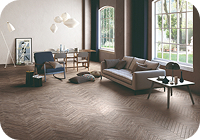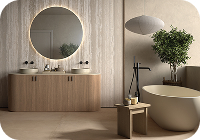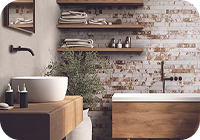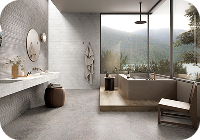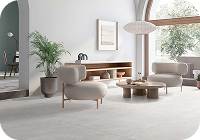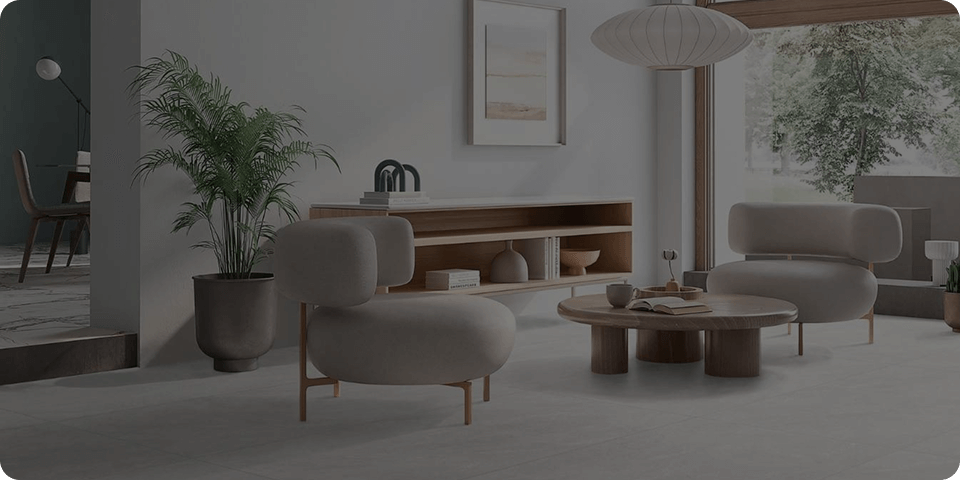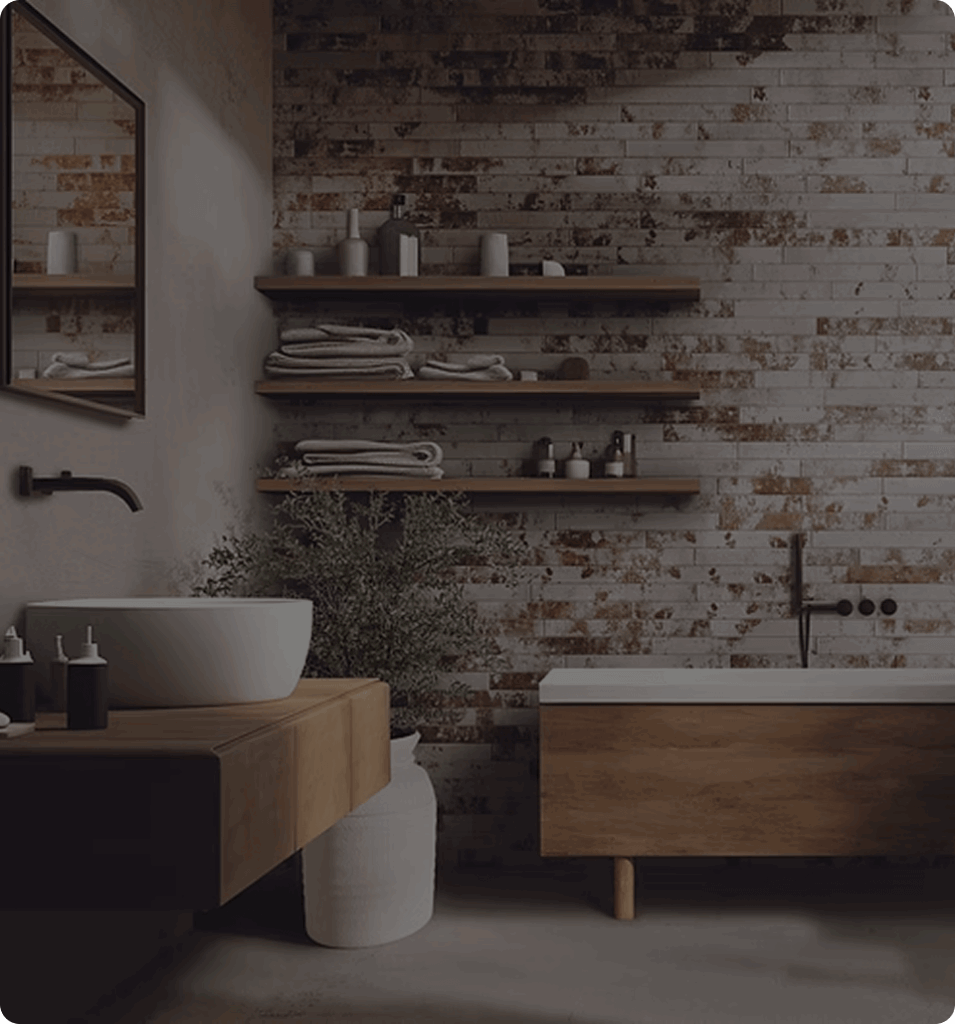Porcelain Tile vs Ceramic Tile: Which Is Right for Your Project?
Porcelain tile vs ceramic tile—it’s like the “Holden vs Ford” debate of the flooring world!
Both tiles are solid options and popular in Aussie homes and commercial spaces, each attracting die-hard fans. But when it comes to choosing the right tile for your project, it’s not about team loyalty; it’s about knowing what will work best under your feet and for your budget.
So, what’s the difference? While both are made from similar materials and through similar processes, they have unique traits that can make or break your reno plans if you pick the wrong one for the wrong space.
Whether designing a busy café, boutique bar, beachy bathroom, or your dream kitchen, understanding the differences between porcelain and ceramic tiles will save you time, money, and possibly a few choice words later on!
At Up Spec Suppliers, we stock a huge range of porcelain and ceramic tiles that are stylish, strong, and ready to suit any space. No matter your vibe or vision, we’ve got the tile for the job.
Composition and Manufacturing of Porcelain Tile vs Ceramic Tile
Porcelain tiles are made from refined clay, sand, and feldspar (a mineral found in rocks like granite). The mix is pressed into shape and fired at very high temperatures, usually over 1200°C. This process makes the tiles dense, hard, and low-porosity.
Ceramic tiles are made from natural clay, sand, and water. The mixture is shaped, dried, and fired in a kiln at lower temperatures than porcelain, usually around 1000–1100°C. They’re often coated with a glaze before the final firing to add colour, pattern, and surface protection.
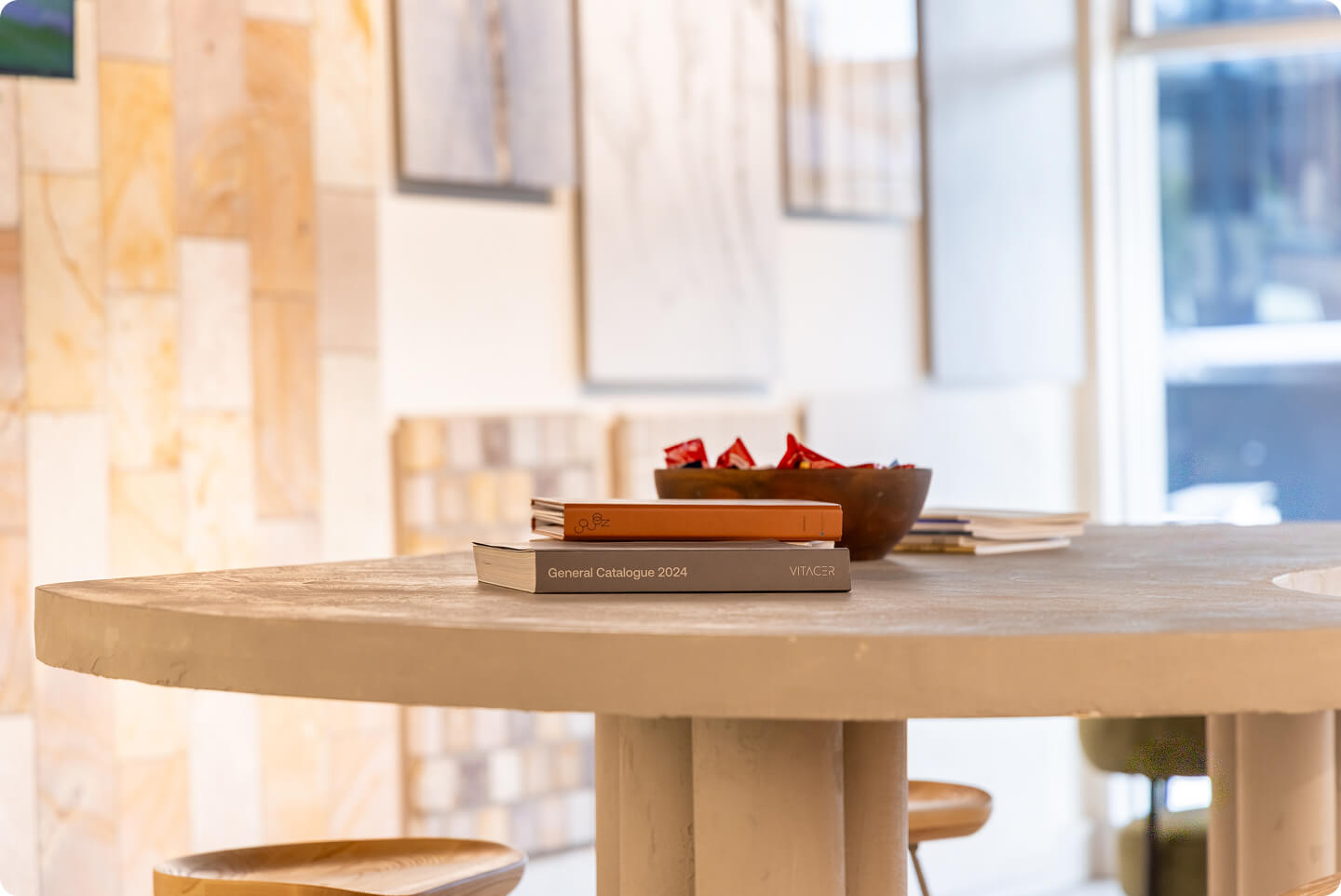
Major Differences Between Porcelain and Ceramic Tiles
Let’s break down porcelain tile vs ceramic tile.
| Characteristic | Porcelain Tiles | Ceramic Tiles |
|---|---|---|
| Density | Very dense; made from refined clay and fired at high temperatures | Less dense, made from coarser clay and fired at lower temperatures |
| Water Absorption | Very low porosity (less than 0.5%); great for wet areas like bathrooms, kitchens, and pool surrounds | More porous (3% or more); not ideal for damp or humid areas, but suitable in bedrooms, studies, or on feature walls |
| Durability | Extremely durable; resistant to scratches, stains, and spills. Ideal for high-traffic areas, commercial spaces, and heavy use | More fragile and prone to cracking or chipping if something heavy drops on them. Better suited to light/moderate foot traffic and indoor use |
| Temperature Resistance | Handle temperature changes well; suitable for outdoor use | Can crack in cold weather; not ideal for outdoor use in frosty climates |
| Aesthetic Appeal | Come in various colours, styles, patterns, and finishes, including realistic stone, timber, and concrete looks | Also available in various colours, styles, patterns, and finishes: gloss, matt, satin, textured, unglazed, and lappato (semi-polished) |
| Cost | Generally, it is more expensive due to manufacturing and material quality. Prices can also vary depending on style and size | More budget-friendly and accessible |
| Installation | Heavier and harder to cut; typically requires specialised tools and installers | Easier to cut and install; good for DIY or quicker residential jobs |
Pros and Cons of Porcelain Tiles
Pros
- ✔ Hardwearing: Built to last, handling heavy foot traffic without wearing down.
- ✔ Water-Resistant: Porcelain’s low porosity means it resists water and stains.
- ✔ Low-Maintenance: Easy to clean and resists scratches, fading, and grime. No sealing or special upkeep is required.
- ✔ Value for Money: Porcelain can mimic stone, wood, or concrete at a fraction of the cost.
- ✔ Versatile: Suitable for floors, walls, indoors or out, providing design flow from room to room or home to garden.
Cons
- ✖ Higher Cost: Porcelain is typically more expensive due to its material quality and manufacturing process. While you’ll pay more initially, you’re investing in longevity and less upkeep.
- ✖ Requires Professional Installation: The density of porcelain makes these tiles harder to cut and install, so DIY projects can be challenging without the right tools or know-how.
Pros and Cons of Ceramic Tiles
Pros
- ✔ Affordability: More affordable than porcelain, without compromising variety or visual appeal.
- ✔ Style: Available in a wide range of colours, patterns, and finishes to suit just about any look.
- ✔ DIY-Friendly: Lighter and easier to cut, ceramic is a favourite for home reno enthusiasts.
Cons
- ✖ Less Durable: Not as tough as its porcelain cousin. Ceramic tiles can chip or crack more easily, especially under heavy impact or in high-traffic zones.
- ✖ Moisture Sensitivity: Higher porosity means ceramic can absorb more water, making these tiles less ideal for bathrooms and outdoor areas.
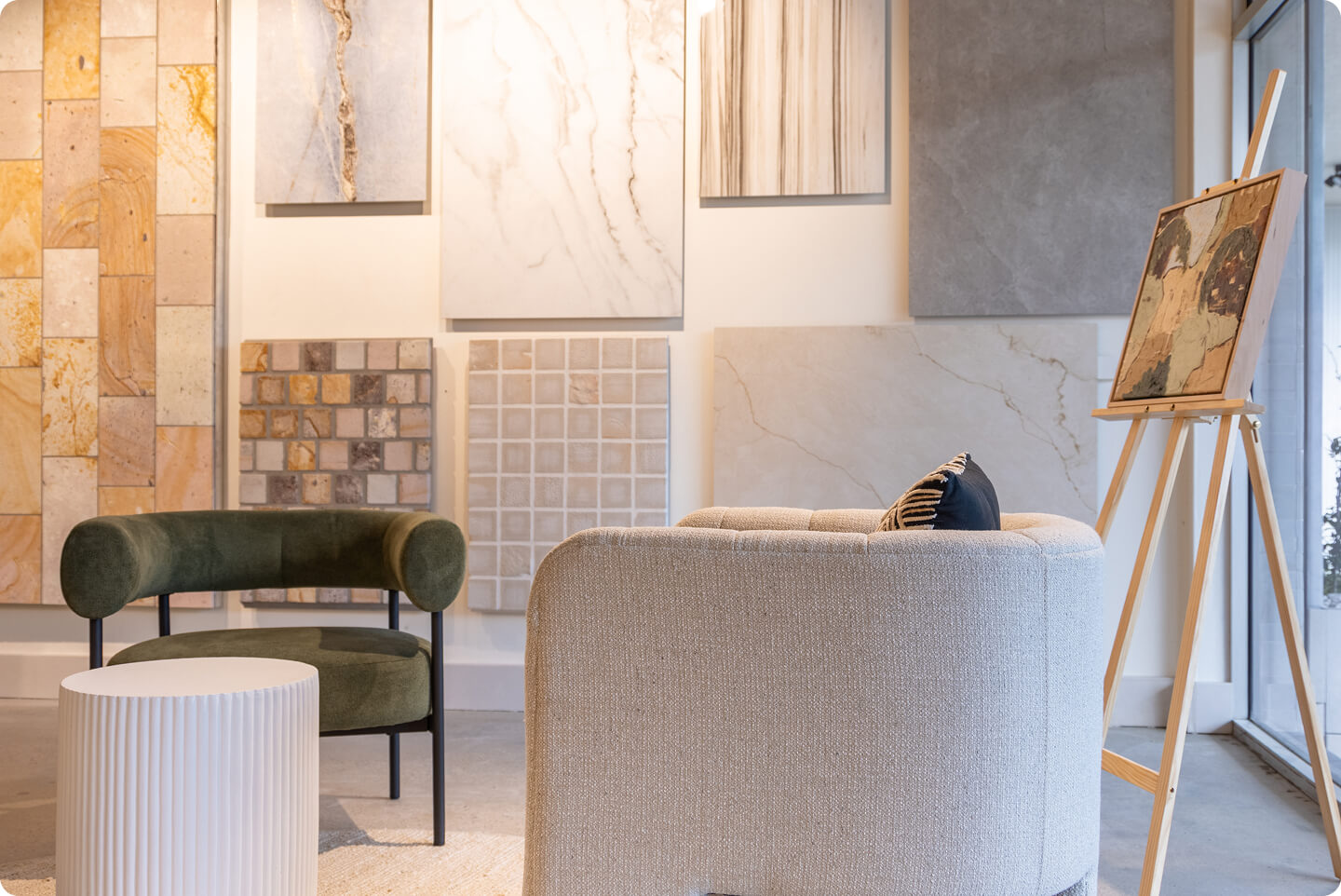
Choosing the Right Tile
When deciding between porcelain tile vs ceramic tile, it’s all about balancing what you want and what the tiles can handle. Think of it as finding the Goldilocks tile—not too hard on your wallet, not too fragile underfoot, but just right for your space!
Consider
- Budget: Ceramic tiles are more cost-effective for style without the splurge on walls and in bedrooms and home offices, where heavy use isn’t a worry. If your budget allows, porcelain offers more durability and long-term value for busy zones.
- Use: For entryways, hallways, kitchens, and commercial spaces, porcelain is the better pick because it can take a beating without cracking or chipping. For wet and outdoor areas, porcelain withstands moisture and braves the Aussie sun and rain while looking effortlessly elegant. Ceramic works well in lighter-use, dry areas.
- Maintenance: Porcelain’s low porosity makes it easy to clean and resistant to stains and moisture. Ceramic is still manageable, but may need more care in wet or high-use areas, such as regular sealing, quicker wipe-downs, and frequent checks for chips or cracks.
- Style: Both options come in a wide range of colours, textures, and finishes. For example, glazed porcelain and ceramic tiles create a sleek, contemporary look, while matt tiles provide a natural-looking, non-slip surface. If you’re after stone, concrete, or timber-look designs, porcelain offers more lifelike results. Ceramic excels in colour variety and decorative appeal.
- Installation: Porcelain is denser and tougher, which makes it harder to cut and lay. It usually requires specialised tools and professional installation. Ceramic is lighter and easier to work with, making it a safer choice for DIY jobs where precision cutting is less of a concern.
Before making your final call, consult with a professional tile supplier. They can help you weigh up the pros and cons of each tile type based on your project’s needs. Also, you can ask for product samples to compare tile finishes in your space’s natural light and surroundings.
Explore Premium Tile Options with Up Spec Suppliers
At Up Spec Suppliers, we’ve got a collection that’s anything but basic. From ceramic classics to porcelain powerhouses, there’s a tile to suit your style and space.
If you’re after a natural stone aesthetic without the maintenance stress or premium price tag, check out our porcelain tiles that mimic granite, travertine, marble, and limestone. We also have concrete and timber-look tiles that combine texture, charm, and strength.
Want to mix things up? We’ve got shapes and colours for days! Think subway tiles, hexagons, and bold statement colours designed to make your walls and floors pop.
Dive into our Explore The Range page for inspiration, collaborate with us in our Projects Portal, and use the Contact Us page to talk tiles with our experts.
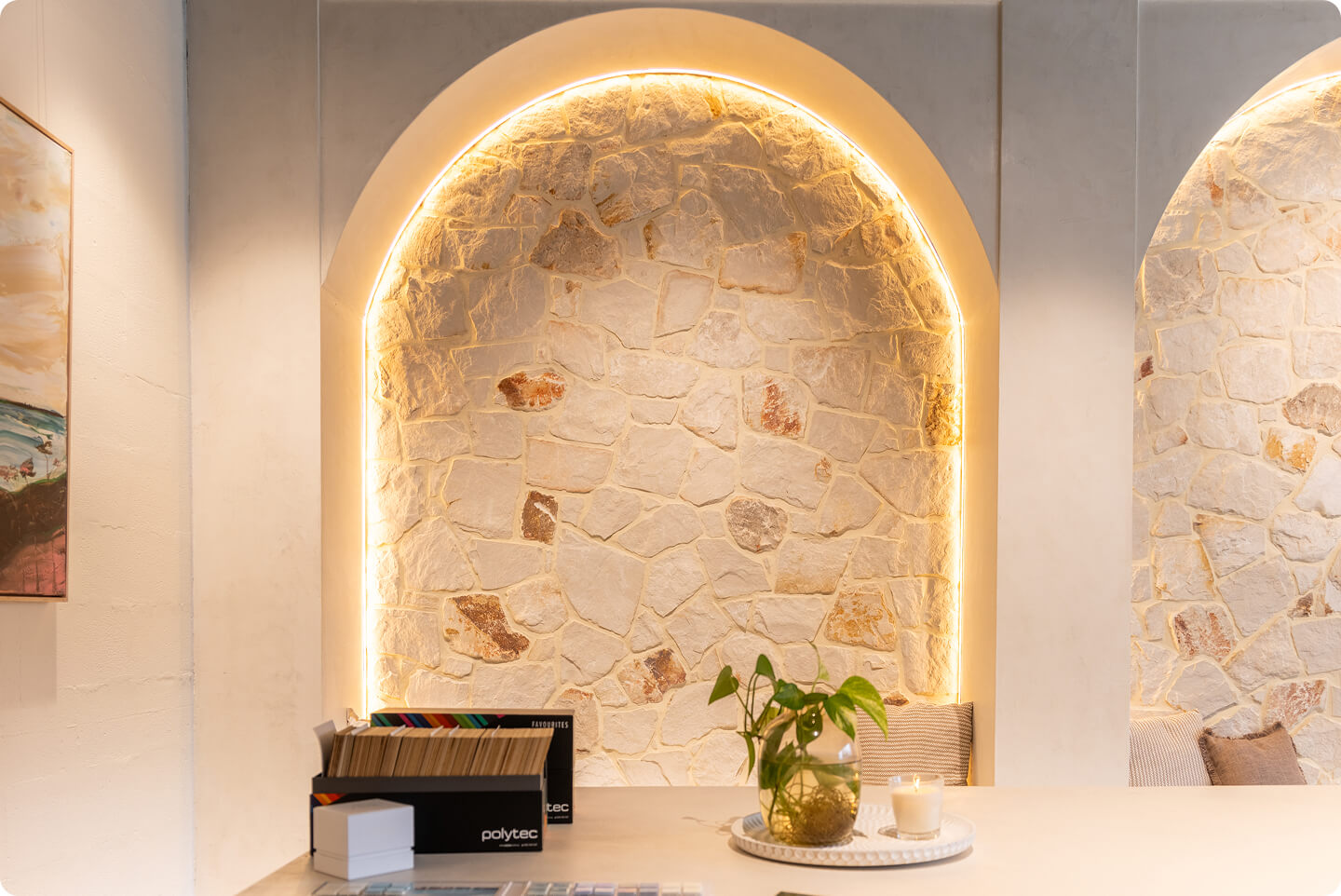
FAQs About Porcelain Tile vs Ceramic Tile
What Is the Difference Between Porcelain and Ceramic Tiles?
Porcelain tiles are ultra-dense and super tough, which makes them perfect for busy floors and wet zones.
Ceramic tiles are more affordable, lighter, and easier to work with, so they’re great for low-traffic areas and DIY installation on a budget.
How To Identify Ceramic vs Porcelain Tile?
Porcelain tiles feel heavier, smoother, and denser, with a more refined, uniform look, even along the edges. The colour often runs through the tile body.
Ceramic tiles usually have a glazed top with a different-coloured base, and you may notice a slightly rougher or more porous texture on the sides or back of the tiles.
Are Porcelain Tiles Worth the Extra Cost?
If you need durability, water resistance, and low maintenance, porcelain tiles are worth every extra dollar. They last longer, work indoors or out, and still look excellent years down the track.
Can Ceramic Tiles Be Used Outdoors?
Ceramic tiles can be used outdoors, but with caution. They are best for covered outdoor areas with low foot traffic, as they’re less robust and more porous than porcelain. Always check the slip rating before laying them outside.
Which Tiles Are Better for Bathrooms?
Porcelain tiles are better for bathrooms because of their low porosity, water resistance, and high durability. Ceramic tiles can work too, but only in low-moisture spots like feature walls or above-vanity splashbacks.
Find the Perfect Tile for Every Space with Up Spec Suppliers
Porcelain vs ceramic tiles—which is the winner for your project?
It all comes down to what your space needs. And knowing the differences between these tiles, such as resilience and cost, will save you a world of trouble down the track.
Don’t just wing it! Discover the perfect porcelain or ceramic tiles for your next project by browsing our range, working with us via the Projects Portal, and contacting us for personalised advice.
